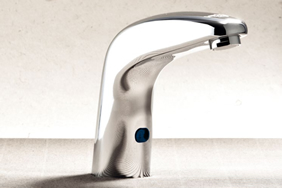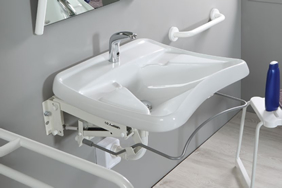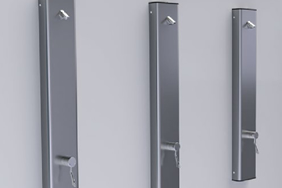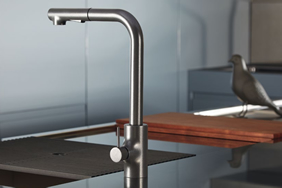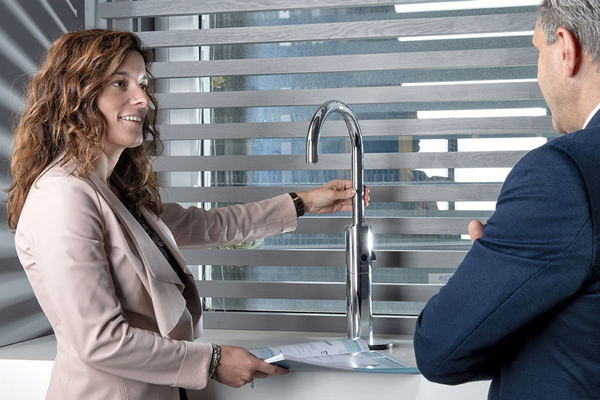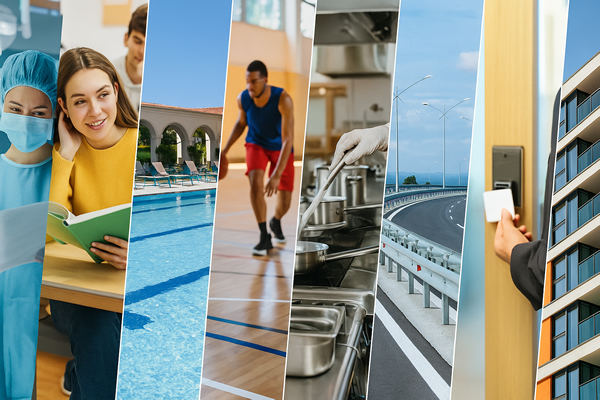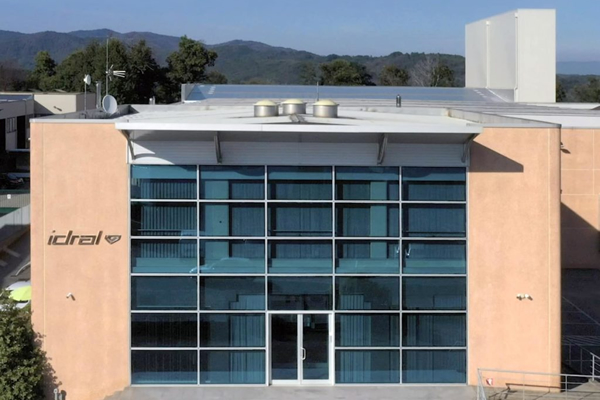Low maintenance and durability in public toilets: technical choices for efficient design
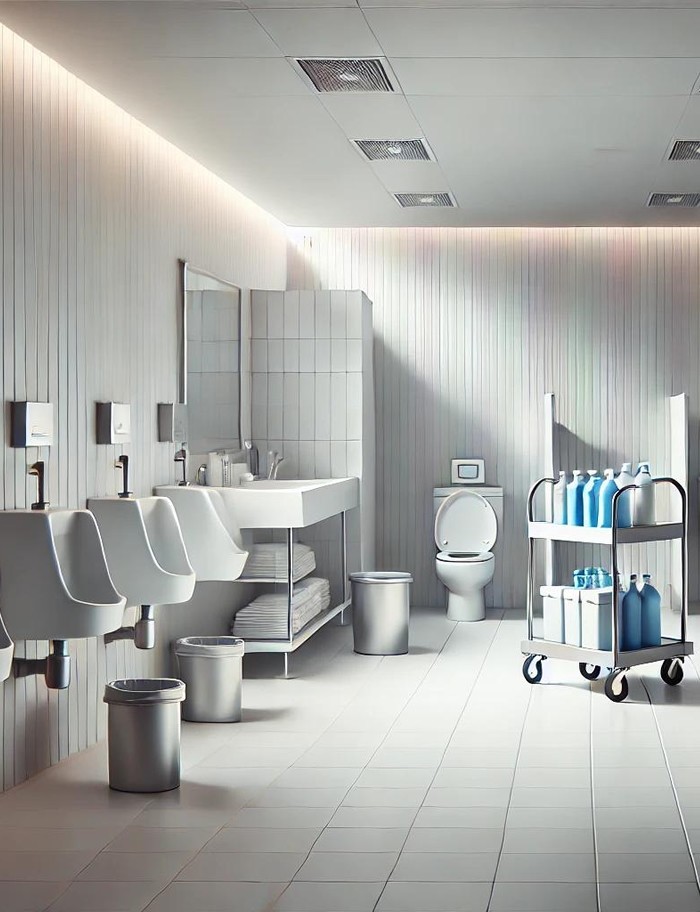
Designing public toilets in high-traffic spaces is a challenge that requires intelligent and durable solutions. Infrastructures such as airports, railway stations or large shopping centres are subject to a constant flow of people, and every detail counts: from the choice of materials to ease of cleaning and innovative hygiene technologies. In this context, touchless technology plays a key role, improving the user experience, reducing operating costs, cutting maintenance and ensuring cleaner and safer spaces. Here's how to design public toilets that stand the test of time and intensive use, ensuring efficiency and sustainability.
1. High Resistance Materials: Chrome Plated Brass and Stainless Steel
The choice of materials is crucial for durability in high-traffic public spaces. Chrome-plated brass is often preferred for faucets due to its resistance to corrosion and wear and tear, keeping its aesthetic and functional properties intact over time. This material not only withstands intensive use, but is also easy to clean, a key feature for public environments where hygiene is a priority.
Similarly, stainless steel is a key material for its exceptional resistance to mechanical damage and corrosion. A prime example is Changi Airport's Terminal 4, which has implemented automated taps made of stainless steel. This material has not only improved hygiene, but also significantly reduced maintenance costs due to its robustness and ease of cleaning. In addition to the automated taps, the terminal introduced technological solutions in other facilities, such as the suspended footbridge, where a duplex stainless steel tensioning system ensures durability and requires very little intervention.
The combination of chrome-plated brass and stainless steel creates highly durable public spaces, reducing the risk of frequent replacement.
This functional design meets the hygienic needs of users, improving the perception of quality and cleanliness of the facilities.
2. Touchless Taps: Efficiency and Low Maintenance
Touchless technology is revolutionising the management of public toilets, especially in high-traffic settings such as airports and railway stations. In addition to improving hygiene by reducing touch points, these systems contribute to the reduction of maintenance costs. Since the taps remain untouched, wear and tear on mechanical components is significantly reduced, thus reducing the frequency of servicing. In addition, surfaces remain cleaner, reducing the accumulation of dirt and bacteria.
These advantages make touchless taps ideal for busy facilities where maintaining a hygienic environment and reducing operating costs are priorities. Investing in this technology is a sustainable long-term choice for public building operators.
3. All-in-One Solutions for Handwashing
All-in-one solutions represent one of the most interesting innovations for handwashing in public environments. Systems such as Idral's 4All consoles combine faucet, soap dispenser and hand dryer into a single touchless unit, improving overall efficiency. These systems not only optimise water use and reduce energy costs, but also ensure faster and easier cleaning by preventing water from spilling onto the floor.
Furthermore, the integration of these technologies reduces the risk of slips and falls caused by water, improving user safety.
4. Invest in Quality and Anti-vandalism Systems
Choosing quality products, such as Idral's stainless steel automatic taps, allows you to save money in the long run thanks to their greater durability compared to traditional taps, reducing maintenance and replacement costs.
In addition to the use of durable materials and reliable technology, it is essential to protect public toilets from vandalism, which can cause costly damage and service interruptions. Anti-vandalism systems, such as those offered by Idral, use robust materials such as stainless steel and brass, with invisible or behind-the-wall control installations. These solutions reduce the possibility of tampering and improve the overall durability of the installations.
Conclusion
The adoption of durable materials and innovative technologies, such as stainless steel and touchless faucets, is key to designing public toilets that are durable, efficient and easy to maintain. Examples such as Changi Airport's Terminal 4 demonstrate how an integrated approach, combining quality materials and advanced technologies, can radically transform the management of public spaces, improving the user experience and reducing operating costs. If you are looking to renovate or design high-traffic public toilets, contact us to find out which solutions best suit your needs.





